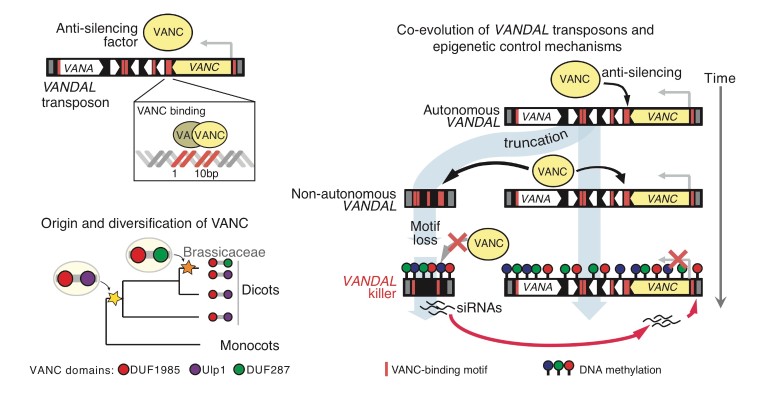Evolution of anti‐silencing systems in plants
Fast co‐evolution of anti‐silencing systems shapes the invasiveness of Mu‐like DNA transposons in eudicot plants
How transposons escape epigenetic silencing is still poorly understood. In a study published in EMBO Journal, researchers from the Qlab team at IPS2 performed a systematic characterization of VANC-induced anti-silencing systems encoded by VANDAL transposons in Arabidopsis thaliana. They found that VANDAL-encoded anti-silencing systems originated before the radiation of eudicots and are characterized by a rapid diversification through the gain and loss of VANC-containing domains and target short-sequence motifs. The sequence, density, and helical periodicity of sequence motifs within non-coding regions of VANDALs determine VANC targeting. In addition, they showed that non-autonomous VANDAL copies hijack the anti-silencing mechanisms of related autonomous VANDALs to promote their own hypomethylation. However, loss of target motifs within non-autonomous copies can induce concerted epigenetic re-silencing of related VANDALs, providing a potential self-control mechanism to limit run-away transposon proliferation. Their work sheds light on the co-evolutionary dynamics fueling the emergence of novel epigenetic control mechanisms in plants

17/05/2022
